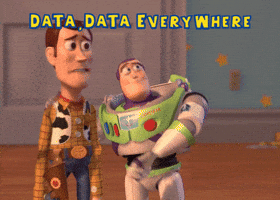Learnings from working as a PM in a marketplace
Nuggets I've learned after 6 months working as a PM in a marketplace.
Introduction
I spent a good part of my product management career working on B2B software. Once you build enough familiarity with those products and customers, it can feel as though you’ve got a decent handle on the key challenges—though nothing is ever truly straightforward. Recently, though, I shifted to build products for a marketplace product, and I quickly realized that several of the approaches I used in B2B didn’t translate as smoothly as I expected. Sure, core PM principles still apply (understand your users, solve real problems, measure your outcomes), but the nuances of a marketplace can significantly alter how you execute.
Below are a few lessons I’ve learned so far, comparing my experience in B2B to my current marketplace role.
1. The Flywheel Shapes Everything
In a marketplace, you don’t just have one user type with a well-defined job-to-be-done. Instead, you might have buyers on one side and sellers (or hosts, authors, etc.) on the other—and the entire system is interdependent. Changes that help buyers could unintentionally create friction for sellers, and vice versa.
When you increase the number of sellers (supply), you can attract more buyers (demand), and that further draws in more sellers. It’s a virtuous cycle if you get it right—and a downward spiral if you don’t.
If you decide, for instance, to tweak the way buyers discover products, you also have to consider any knock-on effects that might confuse or burden your sellers.
Compared to B2B—where you often optimize for a single customer persona or set of use cases—managing a marketplace means staying hyper-aware of this dynamic dance between multiple user segments.
2. Data at Scale: Essential for Finding Real User Struggles
When I was working on B2B products, we had relatively direct relationships with a key enterprise customers. We could talk to them in depth, run a pilot, gather feedback, and refine based on what we learned. That provided substantial clarity on whether a new feature or direction made sense.
In a large-scale marketplace, you might have millions of buyers, sellers, or both. It’s not feasible to interview them all. So while conversations with a few representative users are still crucial, data becomes your best ally to confirm where problems exist and how widespread they are.
You quickly learn to interpret funnels, analyze usage patterns, and detect anomalies. It’s the fastest way to pinpoint issues in a sea of user interactions.
Even with great dashboards, you still need qualitative research to interpret the “why.” Data might tell you conversion is dropping at a specific step, but interviews often reveal the underlying reasons.
In essence, both data analytics and user interviews are invaluable—one frames the problems at scale, the other provides the deeper context.
3. Internationalization: “Copy-Paste” Rarely Works
You might think that if your marketplace thrives in one region, you can just replicate the same approach in another. I’ve found that while the flywheel concept remains the same (buyers + sellers feeding each other), every market has its own quirks.
Localization Matters: Payment preferences, cultural norms, trust factors, and competitive landscapes differ vastly.
Similar… Yet Different: You’ll likely have to adapt flows, policies, and even product offerings. A strategy that worked great in Germany might fall flat in Spain if the local user expectations don’t align.
Unlike some B2B products—where the same solution can often be adapted with minimal friction—marketplaces demand a careful look at each new region’s unique attributes.
4. How Teams Organize: End-to-End Journeys vs. Specialized Focus
In many B2B organizations, teams are structured around specific modules or use cases—say, one team for analytics, another for integrations. In a marketplace, I’ve often seen teams align around user journeys—like the buyer journey or the seller journey—supported by other groups who specialize in areas like search, payments, or onboarding flows.
You might have a team responsible for every step the buyer takes, from discovery to checkout to post-purchase support. Meanwhile, a separate team oversees the seller experience, from listing products to tracking performance.
Those core journey teams might be complemented by specialized squads focusing on deeper technical or functional layers (e.g., payments, logistics, or content moderation). Everyone must coordinate to ensure the marketplace runs seamlessly end to end.
5. A/B Testing Is Everywhere
In B2B, feature flags and controlled rollouts are common ways to introduce changes. But large-scale A/B testing tends to be more prevalent in marketplaces, largely because you have a high volume of daily user interactions to measure.
With enough traffic, you can run quick experiments to see how a UI tweak or new feature impacts behavior. The risk is focusing too narrowly on a single metric and missing the broader implications. A tweak that boosts immediate conversion might hurt long-term user satisfaction.
Striking the right balance—where you get statistically sound insights but still keep an eye on the holistic user experience—is key.
6. Maintaining the Big Picture
In a marketplace, you can get drawn by data-driven experiments and short-term optimization. While it’s valuable to keep incrementally improving, you also need to step back and see the full picture.
Sometimes you’ll see a quick win in conversion, but it might add complexity for sellers or erode trust if not implemented thoughtfully. You must always consider the broader ripple effects. Even a small UI change could alter the balance between buyer and seller satisfaction.
7. Relationship Depth and Reputation Matter
In a B2B scenario, customers typically pay higher amounts and enter into longer-term contracts, making their relationship with your product more anchored and deliberate. By contrast, in a consumer marketplace, the switching cost for users is often low. If they find a more appealing option—whether it’s better pricing, enhanced transparency, or simpler flows—they can leave with minimal friction.
Trust and user sentiment become critical. If people suspect your marketplace is falling behind or not meeting their expectations, they can quickly move to a competitor. It is critical to ensure that feedback is being collected on a regular basis—through surveys, app store reviews, and social platforms—so you can respond rapidly to emerging concerns.
Wrapping up
Jumping into a marketplace PM role has been equal parts exhilarating and humbling. You learn that everything is connected, from the A/B test you’re running on the checkout flow to the macro-level strategy of which markets to expand into next. In B2B land, you still think of ecosystems, sure—but rarely at the velocity, volume, and complexity that marketplace products demand.
My biggest advice: Embrace the chaos. Learn to see the whole system (the flywheel) while staying grounded in user insights (data + qualitative). Experiment relentlessly, but don’t let an obsession with metrics overshadow the big picture. And remember, sometimes the best insights come from a single user complaint that reveals a bigger systemic issue. In a marketplace, you just never know which lever, big or small, might cause the entire engine to roar—or stall.
Thanks for reading, and as always, feel free to drop a comment or reply with your own experiences. I’m still learning—and that’s exactly what makes building marketplace products so fun.





